Microsoft Fabric and the Next Era of Data Integration Innovation
Imagine a world where managing your data feels effortless. Microsoft Fabric makes that possible by unifying your data into one powerful platform. It simplifies workflows, boosts productivity, and helps you uncover insights faster than ever. With built-in AI and real-time analytics, you can make smarter decisions without breaking a sweat. Businesses using Microsoft Fabric have seen a staggering 379% return on investment, proving its value. Whether you're a data expert or just starting out, this tool empowers you to embrace the data revolution with Microsoft Fabric and shape the future of data.
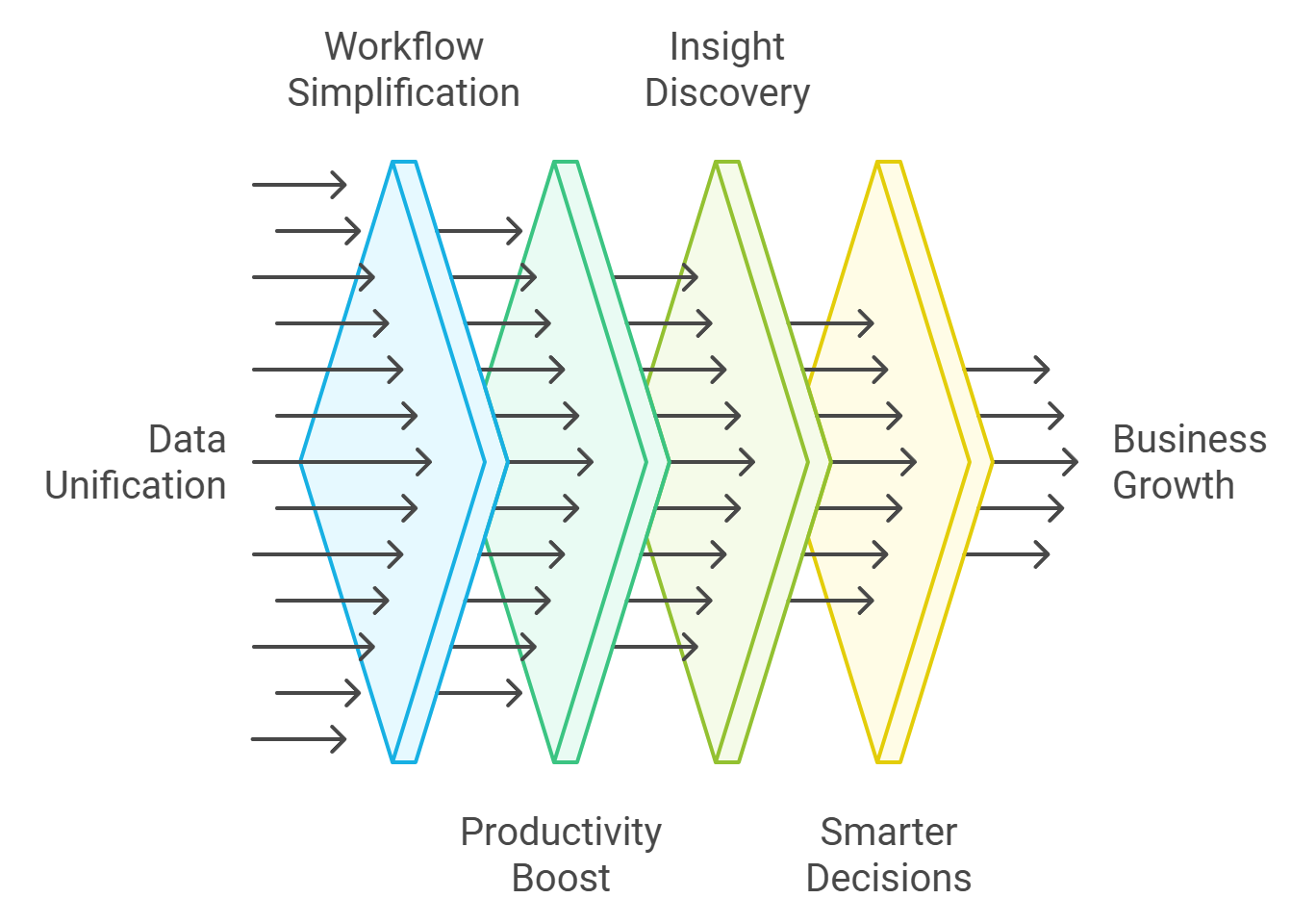
Key Takeaways
Microsoft Fabric unifies your data processes, making it easier to manage and analyze information from various sources in one platform.
With built-in AI and machine learning, even non-technical users can uncover insights and automate workflows without needing extensive expertise.
The platform's scalability ensures it grows with your business, handling everything from small datasets to enterprise-level analytics seamlessly.
Microsoft Fabric integrates smoothly with the Microsoft ecosystem, enhancing collaboration and decision-making through tools like Power BI.
Robust security features and compliance tools help protect your data and ensure adherence to global regulations, giving you peace of mind.
Real-time data streaming capabilities allow for quick decision-making, keeping your operations agile and responsive to changes.
By adopting Microsoft Fabric, organizations can unlock new possibilities for innovation, efficiency, and success in a competitive landscape.
What is Microsoft Fabric? A Unified Platform for the Future of Data
Microsoft Fabric redefines how you manage and analyze data. It’s not just another tool; it’s a complete platform designed to unify your data processes. Whether you’re dealing with massive datasets or just starting to explore analytics, Microsoft Fabric provides everything you need in one place. Let’s dive into its standout features and what makes it unique.
Core Features of Microsoft Fabric
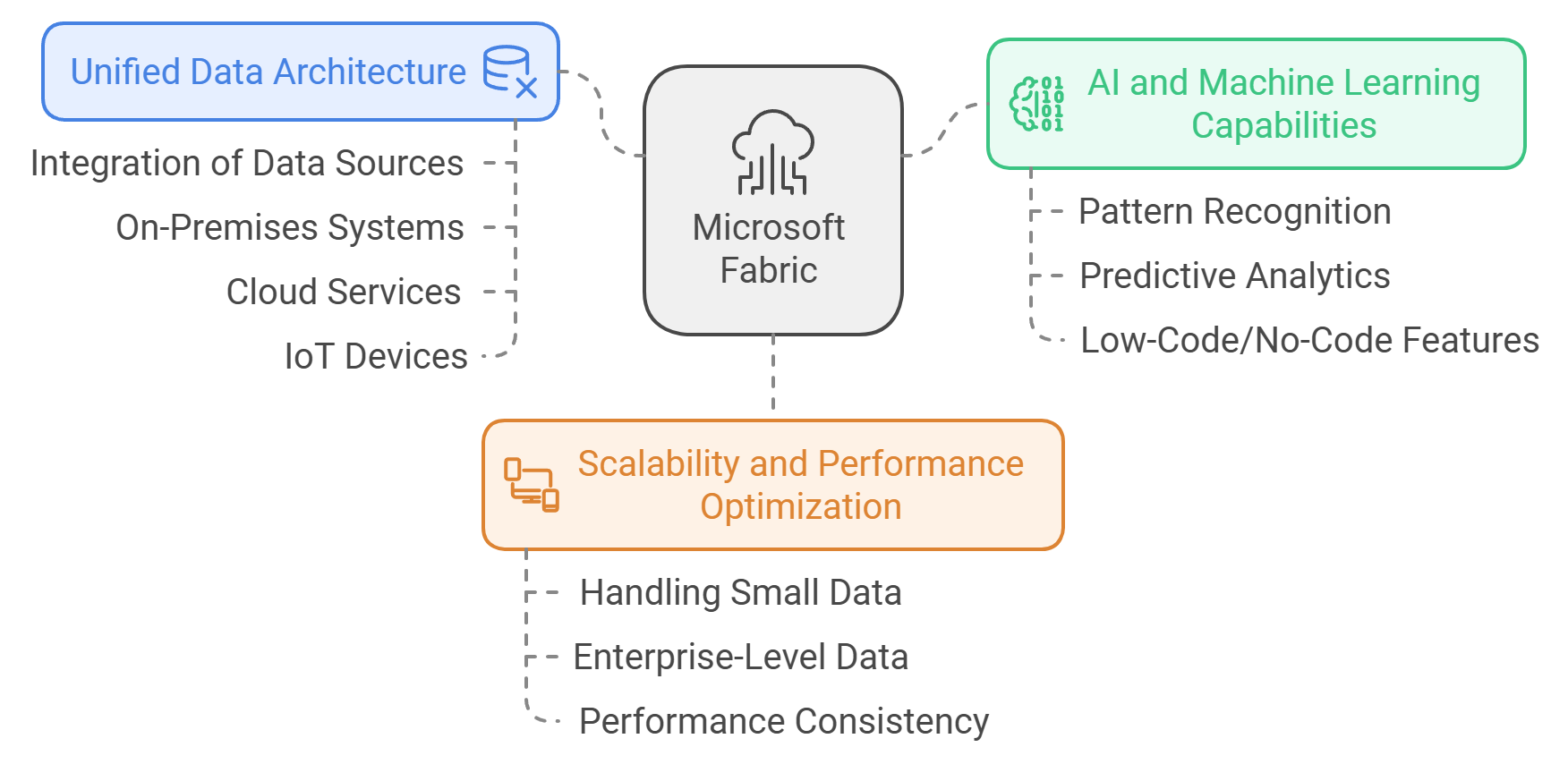
Unified data architecture for seamless integration
Imagine having all your data sources connected without the usual headaches. Microsoft Fabric’s unified data architecture brings everything together into a single environment. It eliminates the need for juggling multiple tools or platforms. You can integrate data from on-premises systems, cloud services, and even IoT devices effortlessly. This streamlined approach saves time and ensures consistency across your data workflows.
Built-in AI and machine learning capabilities
Microsoft Fabric doesn’t just store and process data; it helps you make sense of it. With built-in AI and machine learning, you can uncover patterns, predict trends, and gain actionable insights. These advanced capabilities are accessible even if you’re not a data scientist. The platform’s low-code/no-code features let you harness the power of AI without needing extensive technical expertise.
Scalability and performance optimization
As your business grows, so do your data needs. Microsoft Fabric scales with you, ensuring top-notch performance no matter the size of your operations. Its architecture is designed to handle everything from small datasets to enterprise-level analytics. You’ll never have to worry about outgrowing the platform or compromising on speed and efficiency.
How Microsoft Fabric Differentiates Itself
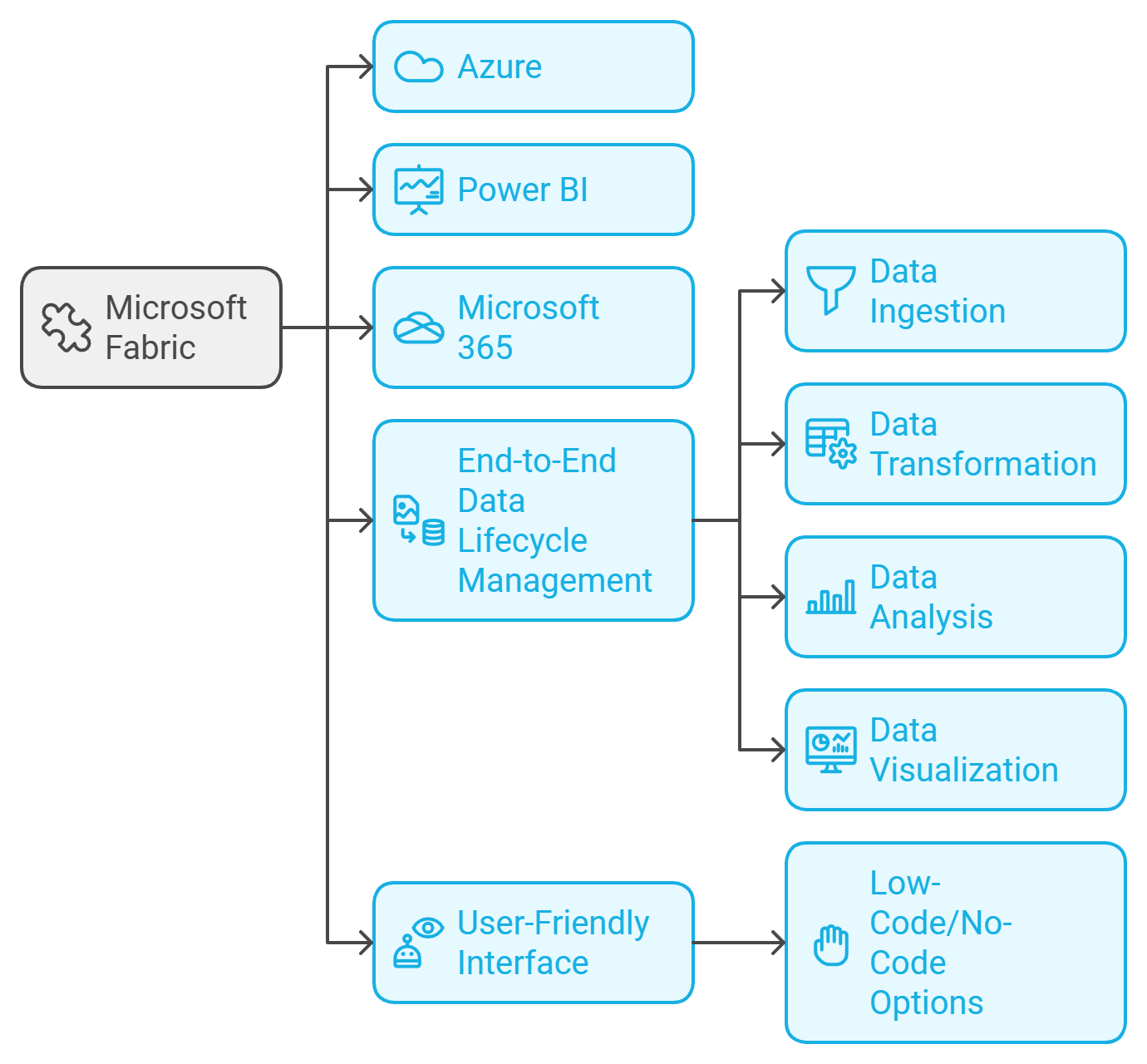
Integration with Microsoft ecosystem (e.g., Azure, Power BI)
One of the biggest advantages of Microsoft Fabric is its seamless integration with the Microsoft ecosystem. It works hand-in-hand with tools like Azure, Power BI, and Microsoft 365. This connectivity allows you to move data between services effortlessly. For example, you can use Power BI to create stunning visualizations directly from your Fabric data, enhancing collaboration and decision-making.
End-to-end data lifecycle management
Managing data from start to finish can be overwhelming. Microsoft Fabric simplifies this by offering end-to-end lifecycle management. From data ingestion and transformation to analysis and visualization, everything happens within the same platform. This holistic approach reduces complexity and ensures that your data remains secure and well-organized throughout its journey.
User-friendly interface for technical and non-technical users
Not everyone on your team is a data expert, and that’s okay. Microsoft Fabric’s user-friendly interface makes it accessible to everyone. Whether you’re a seasoned analyst or a beginner, you’ll find the platform intuitive and easy to navigate. Its low-code/no-code options empower non-technical users to create workflows and generate insights without relying on IT teams.
“Microsoft Fabric is designed with simplicity at its core. It allows organizations to integrate data from different sources into a single, cohesive environment.” – Product Description
By combining these features and unique advantages, Microsoft Fabric positions itself as a leader in the future of data. It’s more than a tool; it’s a game-changer for businesses looking to unlock the full potential of their data.
Current Challenges in Data Integration and How Microsoft Fabric Solves Them
Data integration has always been a tricky puzzle. You’ve likely faced challenges like scattered data, complex workflows, and the constant worry about security. Microsoft Fabric steps in to simplify these hurdles, offering solutions that make managing data feel less like a chore and more like an opportunity.
Fragmented Data Silos
How Microsoft Fabric enables unified data access
Data silos can feel like walls separating valuable information. They slow you down and make collaboration harder. Microsoft Fabric breaks these walls by creating a unified data architecture. It connects your on-premises systems, cloud platforms, and even IoT devices into one cohesive environment. This means you can access all your data from a single platform without jumping between tools.
By integrating diverse data sources, Microsoft Fabric ensures consistency and eliminates redundancy. You no longer need to worry about outdated or mismatched data. Everything stays synchronized, giving you a clear and accurate picture of your operations.
Breaking down barriers between on-premises and cloud data
Managing both on-premises and cloud data often feels like juggling two worlds. Microsoft Fabric bridges this gap seamlessly. It allows you to move data between these environments effortlessly. Whether your data lives in a local server or a cloud service, Fabric ensures smooth integration.
This flexibility is especially useful for businesses transitioning to the cloud. You can maintain access to legacy systems while embracing modern cloud solutions. Microsoft Fabric’s compatibility with open standards makes this process even easier, ensuring your data flows freely across platforms.
Complexity in Data Processing and Management
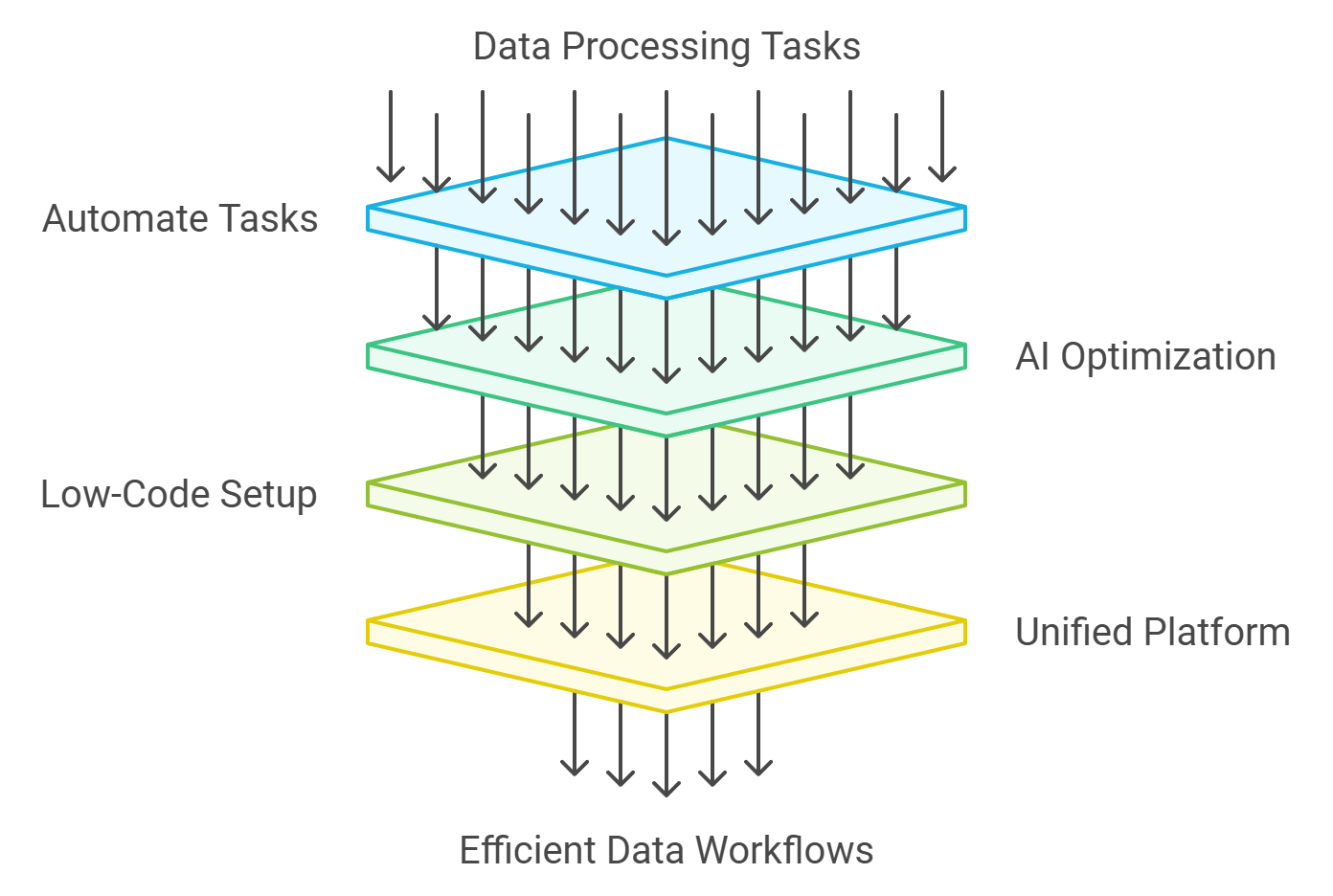
Simplifying workflows with automation and AI
Data processing shouldn’t feel like climbing a mountain. Microsoft Fabric simplifies workflows by automating repetitive tasks. Its built-in AI capabilities analyze your data and suggest optimizations, saving you time and effort. For example, you can automate data preparation and transformation, reducing manual work and speeding up your projects.
The platform’s low-code/no-code features make these tools accessible to everyone. You don’t need to be a tech wizard to streamline your workflows. With just a few clicks, you can set up processes that used to take hours.
Reducing the need for multiple tools and platforms
Switching between tools can disrupt your focus and waste time. Microsoft Fabric eliminates this hassle by combining everything you need into one platform. From data engineering to real-time analytics, it covers the entire data lifecycle.
This unified approach reduces overhead and simplifies your tech stack. You no longer need to manage multiple subscriptions or worry about compatibility issues. Microsoft Fabric handles it all, giving you more time to focus on what matters—making data-driven decisions.
Security and Compliance Concerns
Microsoft Fabric’s robust security features
Data security is non-negotiable. Microsoft Fabric takes this seriously with its robust security features. It uses advanced encryption to protect your data at every stage, whether it’s in transit or at rest. You can also set up role-based access controls, ensuring only authorized users can view or edit sensitive information.
The platform’s built-in monitoring tools alert you to potential threats, helping you stay one step ahead. With Microsoft Fabric, you can trust that your data remains safe and secure.
Ensuring compliance with global data regulations
Navigating global data regulations can feel overwhelming. Microsoft Fabric simplifies this by automating compliance processes. It tracks data lineage, so you always know where your data comes from and how it’s being used. This transparency makes it easier to meet regulatory requirements.
Whether you’re dealing with GDPR, HIPAA, or other standards, Microsoft Fabric has you covered. Its governance tools ensure your data practices align with global regulations, reducing the risk of penalties and building trust with your stakeholders.
“Microsoft Fabric’s unified platform not only simplifies data management but also ensures security and compliance, making it a reliable choice for businesses navigating the future of data.”
By addressing these challenges, Microsoft Fabric positions itself as a game-changer in the future of data integration. It doesn’t just solve problems—it empowers you to unlock new possibilities with your data.
Future Trends in Data Integration and Microsoft Fabric’s Role
The world of data integration is evolving rapidly, and staying ahead means embracing the trends shaping its future. Microsoft Fabric stands at the forefront, offering tools and capabilities that align with these emerging shifts. Let’s explore how it plays a pivotal role in the future of data.
The Rise of AI-Driven Data Integration
How Microsoft Fabric leverages AI for smarter data insights
AI is no longer a luxury—it’s a necessity for modern data integration. Microsoft Fabric integrates AI into its core, helping you uncover insights that might otherwise go unnoticed. It analyzes your data, identifies patterns, and delivers actionable recommendations. For instance, you can predict customer behavior or optimize operations without needing a team of data scientists.
The platform’s AI-driven approach democratizes data analysis. You don’t need advanced technical skills to benefit from it. By making AI accessible, Microsoft Fabric empowers you to make smarter decisions faster.
Automating data preparation and transformation
Data preparation often feels like a tedious chore. Microsoft Fabric changes that by automating these processes. It cleans, organizes, and transforms your data with minimal effort on your part. This automation saves time and reduces errors, letting you focus on extracting value from your data.
For example, instead of manually sorting through datasets, you can rely on Fabric’s AI to handle the heavy lifting. This streamlined approach accelerates your workflows and ensures consistency across your projects.
Real-Time Data Integration and Analytics
Microsoft Fabric’s capabilities for real-time data streaming
In today’s fast-paced world, waiting for data updates isn’t an option. Microsoft Fabric excels in real-time data streaming, giving you access to up-to-the-minute information. Whether you’re monitoring supply chains or tracking customer interactions, you’ll always have the latest data at your fingertips.
This capability is especially valuable for businesses relying on quick decision-making. With real-time insights, you can respond to changes instantly, keeping your operations agile and competitive.
Supporting decision-making with up-to-the-minute insights
Having real-time data is one thing; using it effectively is another. Microsoft Fabric bridges this gap by turning raw data into meaningful insights. Its analytics tools process information as it arrives, presenting it in a way that’s easy to understand.
Imagine being able to adjust marketing campaigns or optimize inventory levels based on live data. Microsoft Fabric makes this possible, helping you stay ahead in a constantly changing environment.
The Shift Toward Unified Data Platforms
Why unified platforms are the future of data integration
Fragmented systems slow you down. Unified platforms, like Microsoft Fabric, eliminate this issue by bringing everything together. They simplify workflows, reduce costs, and improve collaboration. As businesses handle more data than ever, unified platforms have become essential for efficiency.
Microsoft Fabric embodies this shift. It integrates various workloads—data engineering, analytics, and governance—into a single framework. This approach not only saves time but also ensures consistency across your operations.
Microsoft Fabric as a leader in this paradigm shift
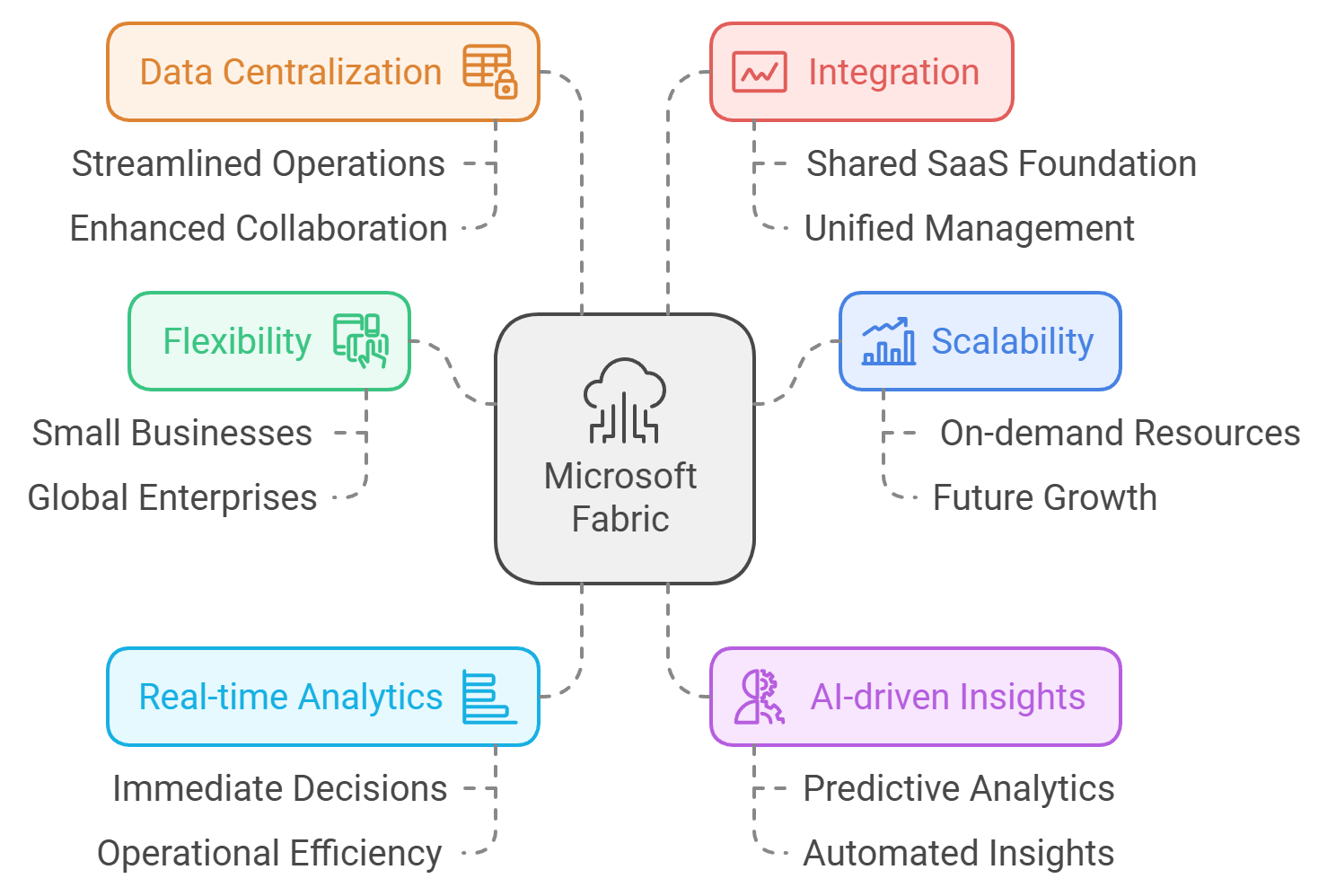
Microsoft Fabric doesn’t just follow trends; it sets them. Its unified data platform offers unmatched flexibility and scalability. Whether you’re a small business or a global enterprise, Fabric adapts to your needs. It supports everything from real-time analytics to AI-driven insights, making it a leader in the future of data.
By centralizing your data processes, Microsoft Fabric helps you unlock new possibilities. It’s not just a tool—it’s a partner in your journey toward innovation.
“Microsoft Fabric accelerates the data journey by integrating analytics, governance, and storage into a shared SaaS foundation.” – Microsoft Overview
The future of data integration lies in platforms that combine simplicity, power, and adaptability. Microsoft Fabric embodies these qualities, positioning itself as a key player in the next era of data.
Real-World Use Cases of Microsoft Fabric
Microsoft Fabric isn’t just a tool; it’s a solution that transforms how industries operate. Let’s explore how businesses are leveraging its capabilities to drive success in real-world scenarios.
Enhancing Business Intelligence with Power BI Integration
Streamlining data visualization and reporting
Imagine having all your data at your fingertips, ready to be transformed into clear, actionable visuals. With Microsoft Fabric’s integration with Power BI, you can do just that. The platform simplifies the process of creating reports and dashboards, making it easier for you to understand complex data. Instead of spending hours piecing together information, you can generate insights in minutes. This streamlined approach not only saves time but also ensures accuracy in your reporting.
“Businesses using Microsoft Fabric and Power BI have reported a remarkable 379% return on investment,” according to Forrester's Total Economic Impact study. This statistic highlights the tangible benefits of adopting these tools for business intelligence.
Empowering teams with actionable insights
Data is only valuable when it drives action. Microsoft Fabric empowers your team by delivering insights that are easy to interpret and apply. With Power BI, you can share interactive dashboards across your organization, ensuring everyone stays informed. Whether you’re in marketing, sales, or operations, these insights help you make smarter decisions. By fostering collaboration and clarity, Microsoft Fabric turns data into a powerful asset for your team.
Optimizing Supply Chain Management
Real-time tracking and analytics for supply chain data
Supply chains thrive on precision and speed. Microsoft Fabric enhances supply chain management by providing real-time tracking and analytics. You can monitor inventory levels, track shipments, and identify bottlenecks as they happen. This real-time visibility helps you respond quickly to changes, reducing delays and improving efficiency. With Microsoft Fabric, you gain control over your supply chain like never before.
Improving operational efficiency with predictive insights
Predicting the future might sound impossible, but Microsoft Fabric gets you close. Its AI-driven capabilities analyze historical data to forecast trends and potential disruptions. For example, you can anticipate demand spikes or identify risks in your supply chain. These predictive insights allow you to plan proactively, ensuring smooth operations. By optimizing efficiency, you save costs and deliver better results for your customers.
Driving Innovation in Healthcare
Integrating patient data for better outcomes
Healthcare relies on accurate and accessible data. Microsoft Fabric revolutionizes patient care by integrating data from various sources into a unified platform. Whether it’s electronic health records, lab results, or imaging data, everything comes together seamlessly. This integration enables healthcare providers to make informed decisions faster, improving patient outcomes. With Microsoft Fabric, you can focus on delivering care instead of managing fragmented data.
Supporting research with unified data access
Innovation in healthcare often starts with research. Microsoft Fabric supports this by providing researchers with unified access to vast datasets. Instead of struggling with disconnected systems, researchers can analyze data efficiently and uncover new insights. This capability accelerates breakthroughs in treatments and technologies, shaping the future of healthcare. By simplifying data access, Microsoft Fabric empowers researchers to push boundaries and drive progress.
“Microsoft Fabric’s unified platform not only simplifies data management but also fosters innovation across industries,” as highlighted in its product overview.
From business intelligence to supply chain optimization and healthcare innovation, Microsoft Fabric proves its versatility and impact. It’s not just about solving problems; it’s about unlocking new possibilities and shaping the future of data.
Microsoft Fabric transforms how you approach data integration. It simplifies complex workflows, unifies scattered data, and empowers you to make smarter decisions. With its AI-driven tools and real-time analytics, you can unlock the full potential of your data. This platform doesn’t just solve today’s challenges—it prepares you for the future of data. By adopting Microsoft Fabric, you position your organization for innovation, efficiency, and success. Whether you’re scaling operations or enhancing analytics, this tool equips you to stay ahead in a competitive landscape.
See Also
Exploring Microsoft Fabric's Impact on Data Transformation
Unlocking the Potential of Microsoft Fabric for Success
Transitioning from Data Management to Data Leadership
